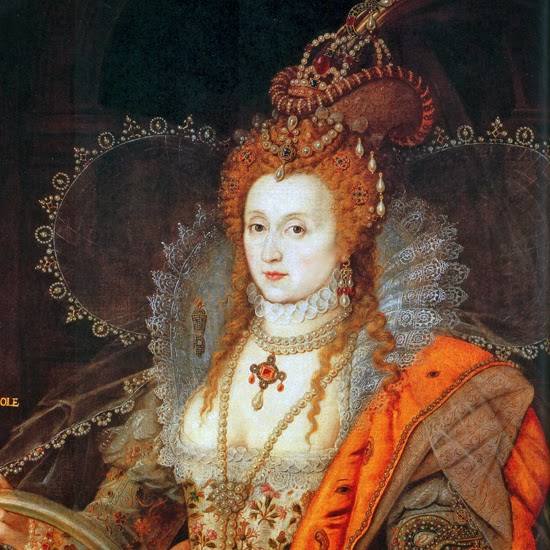Tendrils
Tendrils refer to something resembling a plant tendril, like a slender curl or ringlet of hair (shown in the image above). I really like the look of these because they are actually quite unique and different to standard curl and create more of a wave shape.
Caul
A caul is a common covering worn with buns. It is a type of mesh hairnet that gathered and encased the hair, it often contained pearls and was stitched in the front.
Buns
Worn most commonly by married or adult women, buns were an integral part of most Elizabethan hairstyles. Formed from the hair on the back of the head, buns facilitated the use of the high collars and ruffs popular at the time, and were almost always hidden under some kind of head covering. Often sewn into place rather than pinned, buns lasted several days between washing and resetting.
French Hood
Anne Boleyn is credited with introducing the French Hood into England. During her stay at the French court she adopted the continental style, and continued to wear it upon her return to England. This portrait of Anne depicts the classic early French Hood, as it was worn in England-closely fitting the head, covering the ears, with a gradual flare towards the back and the usual gold, pleated ribbon around the base. Whether this pleated ribbon is part of the hood or part of a coif worn beneath the hood is unknown. The French hood is obviously a separate item, and not a folded back section of the veil worn with it. A row of pearls decorates the top and bottom edges of the hood.
Coif
The coif is, quite simply, a close-fitting cap made of a light fabric, usually white or naturally-coloured linen (or silk, for the nobility). It was worn for reasons headwear has been worn for centuries--warmth, protection from the elements, and to keep hair out of the face--but it's most important functions during Elizabethan times were conferring respectability upon a woman, and, for more skilled and affluent people, for decoration.
Attifet
An attifet is a heart-shaped headdress with a point that dips over the forehead, worn by European women in the 16th and 17th centuries. It was first worn by Catherine de Medici and Mary Queen of Scots. The attifet originated in France and was later also worn in countries such as England, Scotland and Czechoslovakia. Typically, the front of the attifet was held in shape by a wire frame. It dipped to a point over the forehead and then curved up and back in an arc on both sides. The attifet was usually made of silk or linen, and trimmed with lace or pearls. It was normally white, although there was also a black variant known as a widow's hood.
Reference: http://www.elizabethancostume.net/headwear/frenchhood.html
http://www.elizabethancostume.net/headwear/coif.html






No comments:
Post a Comment